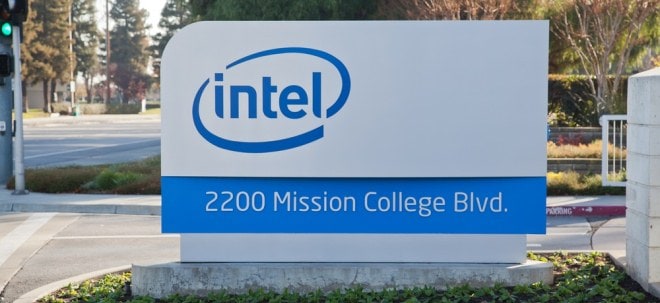ASDAQ: CRME
TSX: COM
VANCOUVER, Oct. 28, 2013 /PRNewswire/ - Cardiome Pharma Corp. (NASDAQ:CRME) (TSX: COM) today announced that the abstract, Conversion of Acute Atrial Fibrillation with Propafenone or Vernakalant, is being presented as an oral presentation by Dr. Diego Conde, Chief of Cardiovascular Emergency Care Section, Instituto Cardiovascular de Buenos Aires, at the Venice Arrhythmias meeting, being held in Venice, Italy, October 27-29, 2013. This abstract is competing for the Geographical Areas Special Best Abstract Award - Latin America. Cardiome is also providing an update on journal publications by Dr. Conde of comparative studies for intravenous (IV) vernakalant in the treatment of atrial fibrillation (AF) versus other antiarrhythmic medications and electrical cardioversion.
"This series of publications led by Dr. Conde reinforces the key differentiating characteristics of vernakalant IV compared to other therapies available for conversion," stated Steen Juul-Möller, M.D., Medical Director at Cardiome Pharma Corp. "His real-life observations using vernakalant IV with respect to time required for therapeutic effect, efficacy, safety and length of stay in the emergency room are very encouraging."
"Our experience using vernakalant IV has been extremely satisfying," stated Diego Conde, M.D., Chief of Cardiovascular Emergency Care Section, Instituto Cardiovascular de Buenos Aires. "In our center, the use of oral propafenone or flecainide is fairly common. However, with the comparable efficacy and safety seen with vernakalant IV, coupled with a reduction in hospital length of stay, I believe vernakalant IV is a compelling and viable therapeutic option for the conversion of recent-onset AF in our institution."
In May 2013, the publication Propafenone Versus Vernakalant for Conversion of Recent-Onset Atrial Fibrillation authored by Dr. Conde et al., appeared in the advanced online article access of Cardiovascular Therapeutics, a peer reviewed medical journal, and represents the first study to compare these two agents.1 This study was an open label, sequential design study in patients with atrial fibrillation of less than 48 hours duration that contrasted treatment with vernakalant intravenous (N=17) to oral propafenone (N=19). Subjects received a single oral dose of 600 mg of propafenone or vernakalant IV in an initial dose of 3.0 mg/kg for 10 minutes and an additional 2 mg/kg if AF had not resolved within 15 minutes, which is in accordance with the approved dosage recommendation. Patients treated with vernakalant achieved conversion to normal sinus rhythm in a median time of 9 minutes versus 166 minutes in the propafenone group (p<0.01). Conversion rate was 78% in the propafenone group at 8 hours and 93% in the vernakalant group at 2 hours (p=NS). In addition to the more rapid time to cardioversion, patients treated with vernakalant IV experienced a significantly shorter hospital length of stay, 238 minutes versus 416 minutes (p<0.01) for patients treated with propafenone. There was one serious adverse event (transient bradycardia) in each treatment group.
Another publication titled Flecainide versus Vernakalant for Conversion of Recent-Onset Atrial Fibrillation authored by Dr. Conde et al., and published online in March 2013 in the peer-reviewed International Journal of Cardiology, showed that the time to conversion to sinus rhythm was 163 minutes in the flecainide group (300 mg single oral dose, N = 15) versus 10 minutes in the vernakalant IV group (labeled dose, N=17) (p<0.01) in patients with AF duration less than 48 hours.2 In this open-label study, patients treated with vernakalant IV experienced a significantly shorter hospital length of stay, 232 minutes versus 409 minutes (p<0.01) for the patients treated with flecainide. The conversion rate for patients treated with vernakalant at 2 hours was 86% compared to 78% for patients treated with flecainide at 8 hours (p=NS). There was one serious adverse event (transient bradycardia) in each treatment group.
Furthermore, a study in patients with AF of less than 48 hours duration who were treated with vernkalant IV had a statistically significant improvement in perception of state of health at 2 hours compared with propafenone or flecainide. Based on the EQ-5D quality of life (QoL) instrument, a mean increase of 12.1 points from baseline was seen in the vernakalant IV group while the mean increases were 5.4 points in the propafenone and 5.2 points in the flecainide group (p<0.01).3 These changes in QoL measured at 2 hours after treatment were consistent with the rapid conversion time seen in the vernakalant IV group. The full study is published online in the Cardiology Journal.
A short-communication authored by Dr. Conde et al., published online in the International Journal of Cardiology in July 2013, titled Vernakalant versus Electrical Cardioversion in Recent-Onset Atrial Fibrillation, concluded that the conversion rate of recent-onset AF and hospital length of stay was similar in patients treated with vernakalant or electrical cardioversion without statistical differences.4 The authors further stated that where electrical cardioversion protocols included the need for sedation and fasting for a minimum of 3 to 6 hours, vernakalant was found to be a safe and effective alternative to electrical cardioversion in this population. This observational study included hemodynamically stable, recent-onset AF of less than 48 hours duration without structural heart disease. Electrical cardioversion was performed in 30 patients and another 30 patients received the labeled dose of vernakalant IV. All electrical cardioversions were performed under sedation with intravenous propafol and with a minimum of 3 hours fasting. Conversion rate was 91% in the vernakalant group at 2 hours and 100% in the electrical cardioversion group (p=NS). Hospital length of stay was 246 minutes in the vernakalant group compared to 263 minutes in the electrical cardioversion group (p=NS). No adverse events were reported.
References:
Conde, D. et al. Propafenone versus vernakalant for conversion of recent-onset atrial fibrillation. Cardiovascular Therapeutics. Advance access published May 20, 2013, doi: 10.1111/1755-5922.12036
Conde, D. et al. Flecainide versus vernakalant for conversion of recent-onset atrial fibrillation. International Journal of Cardiology. Advance access published Mar 21, 2013, doi: 10.1016/j.ijcard.2013.02.006
Conde, D. et al. Vernakalant: Perception of state of health in patients with a recent-onset atrial fibrillation. Cardiology Journal. Advance access published Jul 23, 2013, doi: 10.5603/CJ.a2013.0113
Conde, D. et al. Vernakalant versus electrical cardioversion in recent-onset atrial fibrillation. International Journal of Cardiology. Advance Access published Jul 26, 2013, doi: 10.1016/j.ijcard.2013.06.055
About Cardiome Pharma Corp.
Cardiome Pharma Corp. is a biopharmaceutical company dedicated to the discovery, development and commercialization of new therapies that will improve the health of patients around the world. Cardiome has one marketed product, BRINAVESSTM (vernakalant IV), approved in Europe and other territories for the rapid conversion of recent onset atrial fibrillation to sinus rhythm in adults.
Cardiome is traded on the NASDAQ Capital Market ( CRME ) and the Toronto Stock Exchange (COM). For more information, please visit our web site at www.cardiome.com.
Forward-Looking Statement Disclaimer
Certain statements in this news release contain forward-looking statements within the meaning of the Private Securities Litigation Reform Act of 1995 or forward-looking information under applicable Canadian securities legislation that may not be based on historical fact, including without limitation statements containing the words "believe", "may", "plan", "will", "estimate", "continue", "anticipate", "intend", "expect" and similar expressions. Forward- looking statements may involve, but are not limited to, comments with respect to our objectives and priorities for the remainder of 2013 and beyond, our strategies or future actions, our targets, expectations for our financial condition and the results of, or outlook for, our operations, research and development and product and drug development. Such forward-looking statements involve known and unknown risks, uncertainties and other factors that may cause the actual results, events or developments to be materially different from any future results, events or developments expressed or implied by such forward-looking statements. Many such known risks, uncertainties and other factors are taken into account as part of our assumptions underlying these forward-looking statements and include, among others, the following: general economic and business conditions in the United States, Canada, Europe, and the other regions in which we operate; market demand; technological changes that could impact our existing products or our ability to develop and commercialize future products; competition; existing governmental legislation and regulations and changes in, or the failure to comply with, governmental legislation and regulations; availability of financial reimbursement coverage from governmental and third-party payers for products and related treatments; adverse results or unexpected delays in pre-clinical and clinical product development processes; adverse findings related to the safety and/or efficacy of our products or products; decisions, and the timing of decisions, made by health regulatory agencies regarding approval of our technology and products; the requirement for substantial funding to expand commercialization activities; and any other factors that may affect our performance. In addition, our business is subject to certain operating risks that may cause any results expressed or implied by the forward-looking statements in this presentation to differ materially from our actual results. These operating risks include: our ability to attract and retain qualified personnel; our ability to successfully complete pre-clinical and clinical development of our products; changes in our business strategy or development plans; intellectual property matters, including the unenforceability or loss of patent protection resulting from third-party challenges to our patents; market acceptance of our technology and products; our ability to successfully manufacture, market and sell our products; the availability of capital to finance our activities; and any other factors described in detail in our filings with the Securities and Exchange Commission available at www.sec.gov and the Canadian securities regulatory authorities at www.sedar.com. Given these risks, uncertainties and factors, you are cautioned not to place undue reliance on such forward-looking statements and information, which are qualified in their entirety by this cautionary statement. All forward-looking statements and information made herein are based on our current expectations and we undertake no obligation to revise or update such forward-looking statements and information to reflect subsequent events or circumstances, except as required by law.
SOURCE Cardiome Pharma Corp.
This article appears in: News Headlines
Referenced Stocks: CRME
Read more: http://www.nasdaq.com/press-release/...t-20131028-00650#ixzz2jJ7dHFyH
|


 Thread abonnieren
Thread abonnieren


